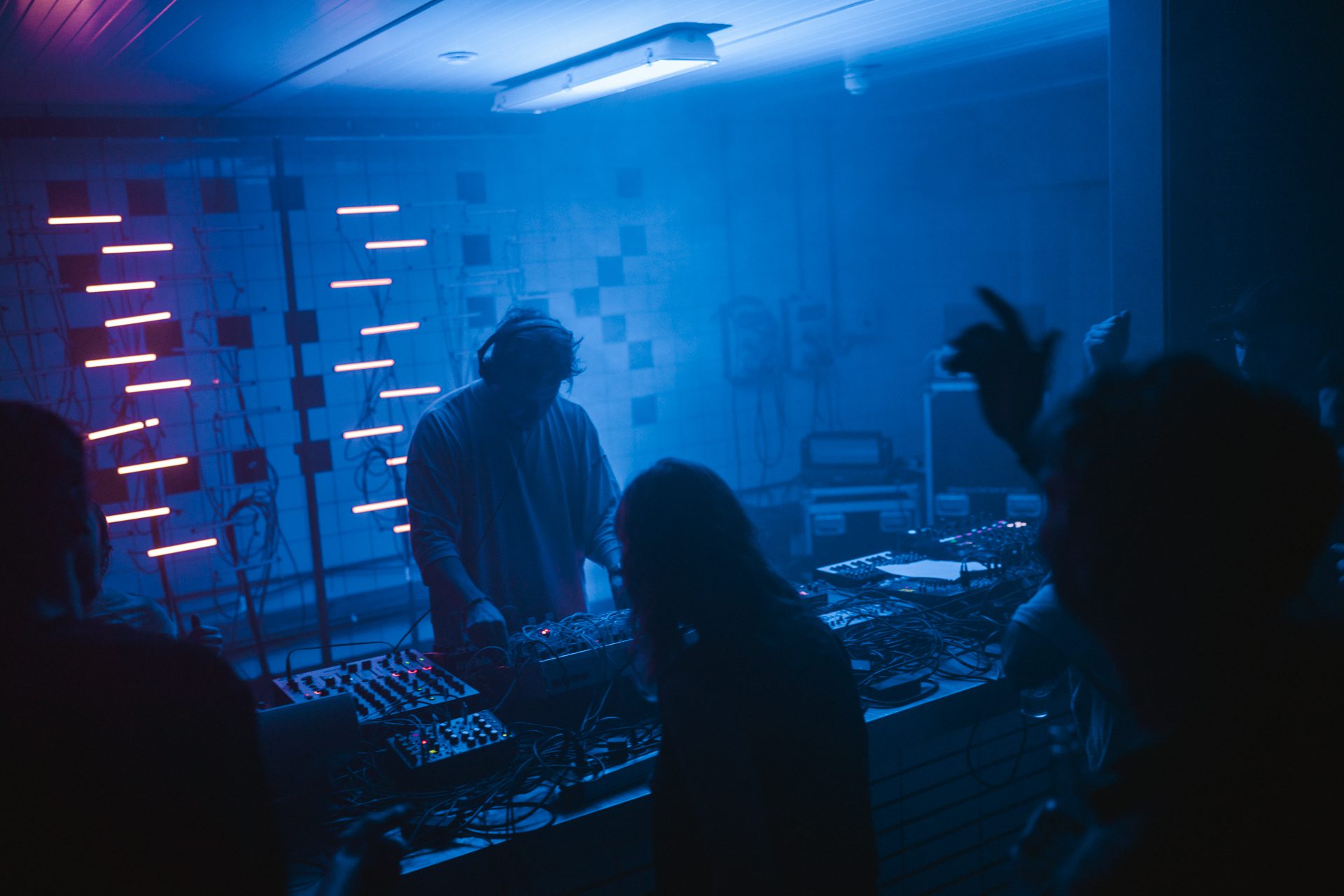As our final club nights of the season approach, the WAS. team is working hard behind the scenes to make it once again an unforgettable experience. This involves the right atmosphere, production, and visual experience, touching upon artful playfulness. The connection between art and electronic music is a strong one.
The integration of art and techno is an evolving movement that crosses traditional boundaries. These days, the fusion manifests in various forms, from live performances featuring synchronised light shows, 3D projections, and interactive installations, to artworks exhibited at electronic music festivals. Both art and techno are driven by a desire to express creativity and enhance the sensory experience, making their collaboration a natural fit. But how should this relationship be defined, and is it truly a good match?
In the late 20th century, contemporary artists began exploring new media, which gave rise to digital and installation art. Visual art expanded beyond the main categories of painting, drawing and sculpture, and with the emergence of performance art, even the artists themselves could become the medium. This divergence from tradition almost naturally lent itself to integration with electronic techno music, which scene came up at around the same time.
One of the pioneers of this collab is Jeff Mills, a prominent figure in the techno scene. In the 1990s, Mills began blending techno with multimedia installations, using futuristic visuals and high-energy beats to create immersive environments that elevated traditional performance art. Another contemporary artist who needs to be mentioned in this regard is the Turkish Refik Anadol. In his artworks, he uses algorithms and AI to generate mesmerising visuals that respond in real time to techno beats. His works compel viewers to stand in awe, witnessing the seamless fusion of sound and sight.
While experimental and contemporary art share a natural affinity with electronic music, institutionalised (and still somewhat elite) museums have traditionally maintained a distance. But in recent years, also here collaborations have emerged. So did the Rijksmuseum in Amsterdam host a rave in its tunnel during Amsterdam Dance Event, and Jeff Mills held a four-month residency at the Louvre, blending music, video, and dance performances. Talk about synergies.
One cannot deny that such collaborations serve the museums, who desire to stay relevant and attract younger audiences. Opening your exclusive (and expensive) venue for such out-of-the-box events gives good publicity and, consequently, income. But let’s stop being too pessimistic here (does not money drive anything these days?): beyond financial and promotional gains (for both parties!), these fusions foster creative innovation, breaking down generational barriers and promoting inclusivity. For one who enjoys the old arts and loves electronic music parties, I think this a pretty exciting development.
Electronic music festivals have also embraced visual art, transforming their terrains into immersive, multisensory experiences – whether it is through decoration, light installations or exhibition areas. When I visited one of the last editions of Welcome to the Future festival in Amsterdam, artists such as Laurens ‘de wilgenman’ (the willow man) used the festival grounds as a canvas for their work. His hat-shaped willow tipi, an interactive installation, invited festival-goers to experience art in a way that blurs the line between observer and participant. Having been inside this art piece myself, I must admit that it did not feel like regular art, whatever that may be. Perhaps, even, it did not feel like how I conceive of art – old, modern, or contemporary – at all, being surrounded by partygoers with electronic music blasting outside. But it is here that lies the beauty and value of it: this blending of art and techno creates a new kind of experience that is neither solely art nor music but a harmonious merger of both. Such merges are both innovative and deeply engaging.
The collaboration between art and techno is a testament to the power of interdisciplinary creativity. By merging the auditory and visual, artists and musicians create experiences greater than the sum of their parts. This fusion democratises art, making it more accessible to diverse audiences and transforming viewers into active participants. As technology continues to advance, the potential for innovation within this fusion is limitless, promising a future filled with new and exciting ways to experience art and music.
Words by Indira Huliselan | 24.05.2024
